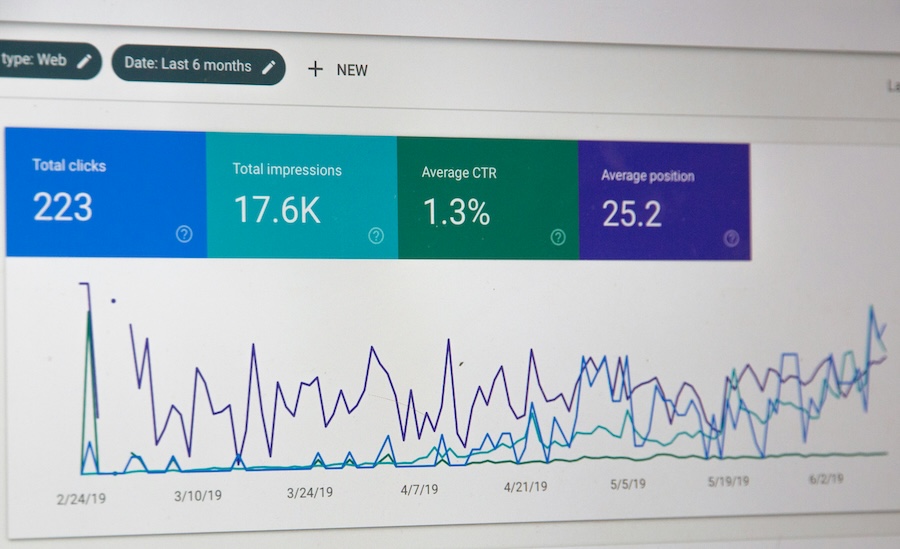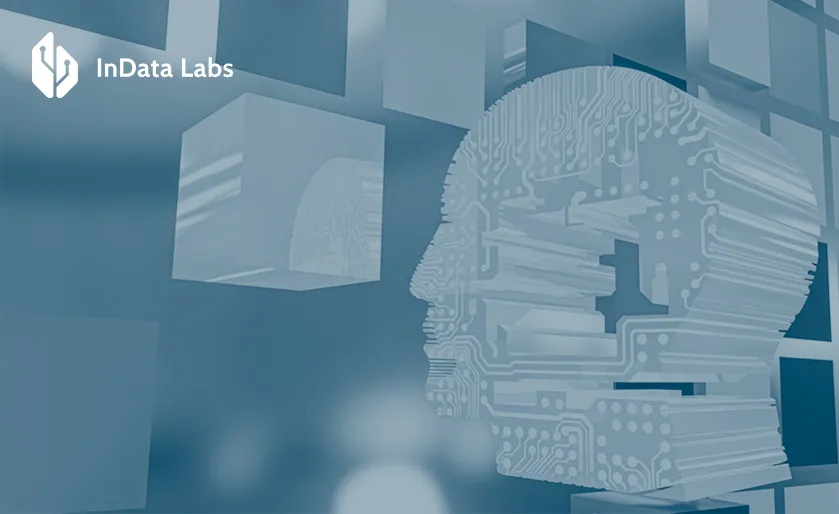Artificial intelligence has progressed from a technology one step above automated algorithms to a tool that can excel at many intricate tasks with machine learning. Now, there are multiple AI tools for businesses tailored to specific tasks and multiple AI consulting companies that businesses figure out this space.

Source: Unsplash
This means that business owners who don’t have the budget to develop and train their own AI models can afford to use the latest technology. Around half of the respondents to a McKinsey study say they introducing AI to enhance workflows yielded a revenue increase. Businesses in the finance, retail, eCommerce, and HR industries can benefit from AI tools.
This guide will outline how AI technologies influence different industries and workflows and suggest AI tools for different tasks.
How ChatGPT influences content creation & SEO
Large Language Models (LLMs) like ChatGPT change the way content is produced because they can generate human-like text in large quantities. This influence also extends to text-heavy marketing strategies—search engine optimization.
But using AI tools for small businesses to generate hundreds of blog posts without human oversight can only lead to problems. Let’s take a look at the specifics of using ChatGPT and other tools in SEO.
AI vs. human-written content
As generative AI tools for business like ChatGPT are good at producing human-like text in bulk, more and more marketing specialists are tempted to use it for content marketing. But it has to be used carefully because it’s not perfect just yet.
The obvious benefit of using AI NLP tools is that the speed of creating content is much greater. ChatGPT can create a draft of a long article in minutes instead of hours. The narrative nature of LLMs also means making iterations in your text to improve it is a matter of a few prompts.
The quality of the text it produces is good enough to pass as human text at first glance, but it might be insufficient, especially if you’re using a free version for longer texts.

Source: Unsplash
LLMs like ChatGPT are prone to repeating certain words and phrases, losing parts of a long prompt, and fabricating facts, also known as AI hallucination. Publishing a text with occasional odd repetition won’t hurt your SEO, but publishing incorrect information that doesn’t bring anything new to the discussion will.
Google doesn’t directly punish AI-generated text but would demote uninformative, devalued articles. Essentially, something that’s been said a thousand times before.
That’s why it’s best to use generative AI tools for business productivity with heavy human oversight for content similar to what’s already on the internet—generating product descriptions in bulk or creating short glossary articles.
For informative, valuable resources like case studies, eBooks, or in-depth research, it’s best to use human-written content. In any case, the key is making enough revisions to make the first draft helpful to users.
ChatGPT & YMYL topics
Google’s ranking algorithms and manual reviewers pay attention to the quality of the content in all contexts, but the attention is even more severe in so-called YMYL topics. YMYL stands for “your money or your life,” topics associated with major life decisions, like investing savings, buying real estate, or undergoing health procedures.
Within these topics, Google’s algorithms and employees will pay more attention to the quality of the information. The formula governing their approach is known as E-E-A-T, which stands for experience, expertise, authority, and trustworthiness.

Source: Unsplash
To fit within Google’s guidelines when using AI in content creation, you’ll have to use human oversight to:
- Create a disclaimer about how you use AI in content production without compromising quality.
- Ensure the author’s expertise is clearly stated.
- Ensure the content demonstrates your expertise in the field and contributes something new to the conversation.
- Ensure the content is helpful to the readers.
Google won’t demote your content only on the basis of it being partly AI-generated. It will look primarily at the content quality instead.
Using ChatGPT for SEO
You can use ChatGPT to create content for your SEO efforts, but it’s far from the only application. The iterative nature of LLMs allows you to use it for research and brainstorming.
An LLM won’t be able to do keyword research fully because it doesn’t have access to keyword metrics, but it’s great at the initial stages of research. Before you use a keyword research tool, come up with seed keywords associated with your business and products to use in the tool. ChatGPT can help you find those you’ve missed.
LLMs are also good AI tools for business ideas, content ideation, and research for articles, especially the paid version connected to the internet. Research comes down to analyzing articles that rank high, and tools like ChatGPT or Perplexity can do that faster than you can do it manually.

Source: Unsplash
Another AI business use case is troubleshooting technical problems with the website. It’s more due to the fact that solutions you’ll find for obscure problems are hidden deep in forums and community pages, and Google is notoriously bad lately for showing pages like these. Asking an LLM will prove faster and more accurate, as it can also review web page code for you.
Since LLMs can write code, they can help with creating Schema markup for your pages. You’ll just have to validate the code to make sure it works correctly.
SE Ranking’s research takeaways
LLMs might not generate text with all the right facts, but you can use them to research factual topics. Specifically, if you go for OpenAI’s SearchGPT.
SE Ranking’s DeepSeek vs. ChatGPT vs. AI Overviews research in YMYL topics shows that both LLMs can be effectively used for search and, in many aspects, outperform Google’s AIO. In fact, AIO didn’t even trigger for 49% of the keywords reviewed.
While both LLMs are similar in that they choose a neutral tone and provide disclaimers when answering the YMYL topics, DeepSeek comes out on top in the number of references it uses to answer the question. It provides over 20 sources on average, almost double of what ChatGPT and AIO do.
DeepSeek also provides real-life examples for information provided by default. The only drawback is that being a Chinese company, it has to follow local regulations that prohibit it from providing information the Chinese government deems sensitive. Otherwise, you can use both DeepSeek and ChatGPT to research YMYL and other topics and find reliable sources for them.
AI chatbots & virtual assistants: Revolutionizing customer interaction
Customer support across multiple channels is indispensable for the success of any business. The biggest problem ensuring it is that many customer support departments have a high turnaround. CS representatives typically don’t stay for longer than a few years, mainly due to the monotony and the pressure of the job.
An alternative to a human representative in the live chat used to be the type of chatbot where users could navigate the dialogue by clicking on the response options, sometimes typing in information. But that was simply not enough to be useful to users.
Now, with AI technology capable of human-like conversations, automating customer service interactions without inconveniencing the users is easy. It wouldn’t influence your brand image negatively either because 81% of consumers believe AI should be a part of CS.
The best tool for the job is the Aurora Borea by InData Labs. It’s an AI virtual assistant that uses Natural Language Processing (NLP) to improve customer interactions. The responses to users’ questions will be human-like and personalized to the customer. They won’t be generic, as Aurora Borea bases customer interactions on your internal knowledge base.
This tool also integrates with your CRM to improve the sales process. It will upload the conversation history with a lead there and summarize the conversation. It will also take on the basic sales tasks like scheduling a meeting or redirecting the customer to a sales representative.
AI tools for business automation like this one will increase your customer support response time and will keep customer satisfaction high, as it provides accurate answers.
AI-powered tools for analytics & business intelligence
Business intelligence is an area that lends itself to major improvements with AI tools for business analytics. Working with large amounts of data is hard manually, and Artificial Intelligence can streamline all the processes of data manipulation from loading to drawing conclusions from it.
AI tools for business analysts especially excel at testing data, running different scenarios with it, and detecting anomalies. Another way to use AI for business analytics is running predictive or prescriptive analytics.

The type of AI used in these applications is different from what you may know if you’ve used tools like ChatGPT before. They work on the same principles, an algorithm taught with machine learning to perform tasks. In the case of ChatGPT and other LLMs, the AI was trained with human text and large data sets to understand, analyze, and generate its own content.
A good example of an AI tool for business analysis is Tableau. This AI business solution excels at data visualization, enriching data with business context and using natural language to explore data. On top of analyzing raw data with AI, you can use the built in natural language processing capabilities to discover data and look for business insights.
The exact decisions and outcomes for your organization depend on the type of business you run and what the data shows. Texas Rangers, for example, were able to optimize ticket pricing by putting together dozens of factors from previous sales to the team’s performance data to keep the ballpark full. Tableau was also able to help with fan security as the data analytics team was able to graph all the foul balls entering into the arena and decide where to increase net coverage to avoid hurting fans.
In some cases, it’s worth hiring a data science company to set up an analytics framework for your company.
AI marketing tools for small business marketing & customer personalization
Digital marketing can greatly benefit from AI both for the customer-facing team and for the analytical team, which can show in crafting personalized experiences for your customers.
Consumers want personalization in interactions with businesses, and according to a recent BCG report, it goes further than mentioning their name. The report suggests, businesses should use the information their customer give them both overtly and covertly, through purchasing patterns, to suggest products, services, or information about them to the customers. However, using third-party data for personalization may disappoint older generations. You can still use it for segmentation purposes, though.
Since AI software excels at figuring out complex relationships between data, it’s the perfect solution for advanced personalized suggestions. Specialized AI marketing tools for small businesses can do more than that.
One of those, Breeze AI made by Hubspot, offers an array of useful tools for marketing teams. It offers a suite of generative AI tools for your business for creating blog entries, personalized email drafts, and customer support interactions.
This AI application for business also offers a set of BI tools tailored for marketing needs. These can help you create form autofill based on Hubspot’s extensive database of leads, validate data input from different people from the same company, and analyze lead profiles for conversion.
Breeze comes with tools for creating a knowledge database to help customers resolve their issues without turning to the CS team.
AI tools for business automation in CRM & customer support
Many functions essential to CRMs have already been covered above, so it’s only natural to see CRM automation on this list. It’s best to explore how AI can help this area of business with an example: Salesforce’s Einstein AI copilot.
It can help you enhance most areas of customer relationship management in Salesforce, from data collection and analytics to customer interactions. Salesforce AI can help you generate summaries of customer calls and all customer interactions. This information available for each customer can feed into the larger picture and help you build precise customer journeys and receive insights from the data with the help of AI.
Sales representatives will be able to access quick, impactful highlights about each client they’re about to meet without having to read the entire file. Einstein can also streamline repetitive customer interactions by generating personalized emails with a few clicks by reformulating your templates with customer data.

To make sure the customer data is secure, Salesforce puts it through a trust layer before feeding any personal data to the AI.
AI-powered tools in fraud detection and cybersecurity
AI’s ability to analyze large sets of data is what makes it important for security applications. Most financial institutions use it for fraud prevention because AI can find unusual behaviors across thousands of actions in real time. A major deviation from a customer’s typical activity pattern could indicate a fraud risk—theft of credentials or money laundering.
The difficulty of using AI-powered tools for this is that it’s only as good as its training is, and sometimes, biases lead to false positives or overlooking obvious risks. The best way to use AI tools for business analysts in fintech is to constantly test it against simpler rule-based algorithms and recalibrate the model if needed.

Source: Unsplash
Another area where AI can make businesses more secure is in cyberspace. A prime example of a specialized tool that does this is Darktrace. It uses AI algorithms to detect anomalies across all aspects of your business and analyze them for threat potential in real time.
It can help with securing your cloud infrastructure, employee devices, and corporate email. What makes it stand out from regular cybersecurity solutions is that its AI doesn’t just learn by historical data to prevent known threats but looks for anomalies in usage patterns.
With malicious actors also possibly using AI to come up with new ways to defraud you or your customers, it’s essential to stay ahead instead of trying to prevent attacks that have caused harm to someone else.
AI-powered tools for HR & talent management
An average job opening receives over a hundred applications, and with several vacant positions in a company, it’s impossible for the recruiter to review all of those applications manually. AI technology can help by improving how resumes get analyzed in bulk and adding more features to the screening process to find the perfect candidate.
AI doesn’t just help the recruiters but also helps potential employees since it’s a more sophisticated tool than an algorithm that only looks for certain keywords in resumes. LLMs can summarise resumes instead, resulting in a better understanding of each candidate, instead of penalizing good fits who didn’t have the right keyword in their CV.
HireVue is a good example of an AI-based hiring tool. It offers several good features for making it easier to incorporate coding challenges into the interview process or testing candidates on the typical tasks of the job. On top of that recruiting platform, there’s an AI that helps take out a lot of repetitive tasks from the HR workflow.

Source: Unsplash
It can use AI-generated communication to keep them engaged during the hiring process, analyze resumes to find the skill match, and match the talent pool that reaches out to you with the right job.
AI tools for retail businesses in supply chain & logistics optimization
In logistics operations, especially for larger enterprises, the sheer amount of data that has to be analyzed can be unmanageable without the help of AI tools for retail businesses. The need of some aspects of logistics and supply chain operations for predictive analytics also suggests that AI is a great solution for this industry.
Blue Yonder is one good example of AI services. It’s a supply-chain-planning software with AI-based analytical capabilities. With its AI, you can analyze your company’s historical data and signals in the surrounding markets to improve demand forecasting, transport optimization, and other aspects of logistics.
Even though AI is unlikely to make a massive shift in how logistics operates, it might bring down the number of empty miles you have to do and increase savings by a few percentage points, and in many logistics companies, that can amount to a significant profit.
Summary
If you wanted to be one of the first adopters of AI, you’re too late, as AI is already widespread, even though it’s only in its beginning stages. What you can do is be one of the first businesses among your competitors to use it correctly and come up on top. More than half of businesses that use AI report a positive impact on their productivity and bottom line. To be among those businesses, use the right tools and be wary of the two biggest pitfalls of AI—inaccuracy and cybersecurity.
To use this technology without compromising business integrity, double-check the output of LLMs and retrain data analytics models and ensure data compliance.



